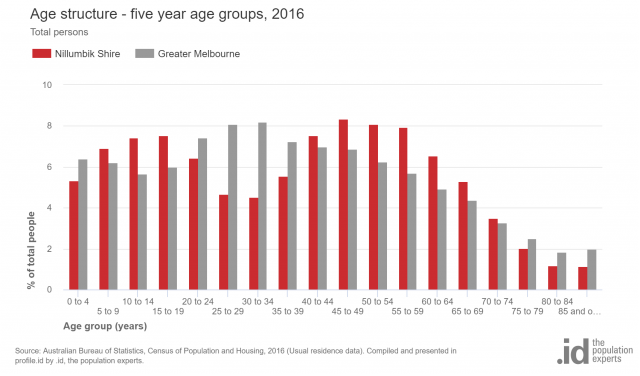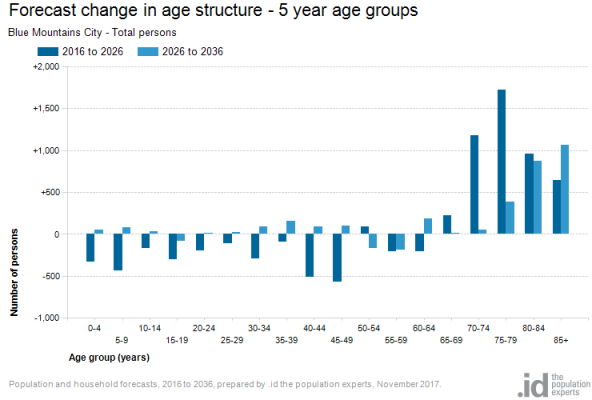The current bushfire situation in eastern NSW is horrendous, and we wish the affected communities all the best. Serious fires happen every few years in Australia. Tasmania had major fires in January this year, while Victoria’s Black Saturday fires in 2009 were the most devastating in Australian history for loss of life. The current fires in NSW are unusual in that they are happening so early in the season, because it has been so dry there over the late winter/spring period.
There are many discussions to be had about living in fire-prone areas of Australia (which is most of the populated areas around the fringes of our cities), but I thought it would be interesting from a demographic perspective to look at what types of people and households live in the most fire-prone areas.
Much of Australia is fire-prone, but we tend to be more concerned with those fires that occur in highly populated areas. For the most part, this is “bush suburbs” on the fringes of our major cities. These are places people choose to live for the semi-rural or Australian bush setting, but they are not rural, with most of the population working in the city or suburbs.
Examples of these areas include of course the Blue Mountains in NSW, but also Wollondilly Shire, Hornsby, Gosford and Wyong, and parts of Sutherland Shire. In Victoria, Yarra Ranges Shire is the classic place for this sort of development, as well as Nillumbik Shire and parts of Murrindindi (very affected in 2009),Cardinia (have a look at the demographics of the the Hills Subregion), Macedon Ranges and Mornington Peninsula. In other states, you have the Adelaide Hills in SA, the Shire of Kalamunda and bush parts of the City of Armadale in WA, and most of Hobart in Tasmania, where rugged bushland is very close to the city.
Topographically, many parts of these areas are typified by detached houses set back into the bush, with tall trees, rugged terrain, and narrow, unmade roads on hillsides, with houses set high above or well below the road.
Demographically, they are also pretty similar. Take a look at the age structure charts for the Shire of Nillumbik in Victoria, and Springwood – one of the fire-affected areas in the current crisis in the Blue Mountains.


While they do vary a bit due to the presence of aged care in Springwood, the bulk of the age chart shows a similar pattern – older parents and older children, what we at .id usually call “mature families”.
While you will find differences between them, the general trend is the same across many of these bush suburbs. Check out similar charts for Kalamunda WA, the Adelaide Hills, and the Erina Heights area on the NSW Central Coast.
Household types in all these areas tend to have dominant couple families with children, and quite a few older couples without children, with relatively few lone person households or single parent families.
For the most part, the bush suburbs are fairly well off, upper middle-income areas (yes, this is a generalisation, but relatively few of them have very low incomes, or very high incomes). They are also largely home ownership areas with few renters. Here is the income chart for Belgrave, Victoria, an area heavily affected in Ash Wednesday, 1983.

These areas tend to attract families looking to upgrade their homes (not first home buyers), and have a bit of space for the kids. So people will move in when they are in their late 30s, with their kids of school age, leading to large numbers of teenagers. Then, because they are a bit further out, and older teenagers really don’t like living in the bush, they are more likely to leave home in their late teens to early 20s, leaving behind empty nester households.
As a result, more than most parts of our capital cities, our bush suburbs are ageing rapidly, and most have a 5-year change chart which looks like this (Blue Mountains):

Given that government policy encourages empty nesters to remain in their own homes, and this is certainly a preference among the baby boomers in many parts of Australia, this is going to lead to more ageing in future. Our forecasts for most of these areas show significant ageing. This is the age profile for Blue Mountains City to 2031.

This will present a challenge to these fire-prone areas, as people age. Once they reach their 80s, will they be able to maintain the large blocks, and keep them fire-safe? How about the logistics of evacuating a large population of older people with potential mobility issues. Already some areas like Springwood have significant elderly, but most bush suburbs have the bulk of their population in the 50-65 age range. What happens over the next 20 years?
Bushfires are a natural part of the Australian landscape which the Indigenous population were very adept at managing, and much of our bush needs regular fire to regenerate. Since European settlement, the fringes of our cities have been regularly threatened by these natural disasters, which don’t work so well with our sedentary way of living. But at no time before have we had such an increasingly elderly population living in the most fire-prone areas, and this is certainly going to present a major fire management challenge in the future.
Subscribe to our newsletter here to receive the latest population and demographics news. Or visit our demographic resource centre to learn more about the different areas in Australia.
















